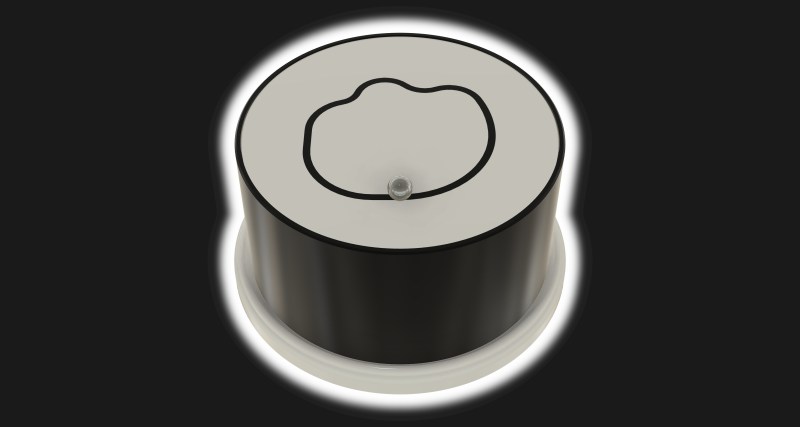Sometimes a coworker sees something on your desk, and they have to ask, “Where can I get one of those?” and that has to be one of the greatest compliments to a maker. [Greg Zumwalt] nailed it with his “Marblevator Line Follower.” Roboticists will immediately recognize a black line on a white surface, but this uses hidden mechanics instead of light/dark sensors. Check out the video after the break to see the secrets, or keep bearing with us.
Inside the cylinder is a battery, charging circuit, inductive receiving coil, and a motor turning a magnet-laden arm beneath the cap. The overall effect is an illusion to convince people that the marble has a mind of its own. You can pick up the cylinder, and it keeps moving as expected from an autonomous bot. The black line is actually a groove, so the bearing follows a curvy course without any extra movements from the magnets within. The two-tone look is super-clean, but the whimsy of a “smart bearing” makes this an all-around winner.
“Marblevator Line Follower” is not the first Marblevator we featured, and we love our bouncing-bearing baubles and music-making machines.
















Video should use RATT’s “Round and Round” ;)
This is truly trivial
I must have missed the hackaday post that included a video about your motorized, battery powered device that was designed by you and 3d printed that involves magnets… oh wait.
“Trivial” is not necessarily a negative comment. I also consider this implementation wonderfully simple.
Gzumwalt is truly one of the greatest designers in the 3D printing world. His incredible designs will keep your printer busy for days- check him out !!
“The black line is actually a groove, so the bearing follows a curvy course without any extra movements from the magnets within.”
That’s pretty much the exact opposite of how this works. The black line being a groove would defeat the purpose of the illusion.
The internal magnet moving and following a hidden channel is the the crux of making it appear to be some complicated miniaturized line-follower. Making it clear the external black and white parts of the top surface are planar and flat is critical to the whole thing.
From the Instructable:
“The black line is located in the center of the hidden track. A ball bearing on the top of the track follows the hidden magnetic sphere which is following the hidden track, giving the appearance that the ball bearing is following the black line.”
Yeah, my comment “it’s magical because there isn’t a groove RTFA you idiots” hurt someone’s feeling so they deleted it.
You’d think they’d at least have updated the article, but eh, of course not.
I only RTFA in the first place because the article didn’t make any sense.
Like, really, the gimmick is the black line is a groove? How is that noteworthy?
Then after reading: Ohhh, the gimmick is the black line is explicitly *not* a groove. That the means of “line following” is hidden. That makes way more sense.
Went down the same path, lol. “What’s so special about a ball rolling in a (ok rather narrow) groove?”
A useless gadget that has a metal ball rolling with a continuous annoying sound. Take my money.